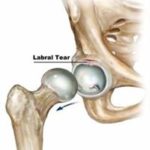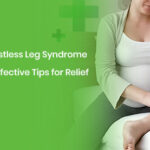What is Lumbosacral Spondylosis and How Can You Manage It?
Back pain. It’s something almost all of us have dealt with at some point, whether from a long day at the office, lifting something too heavy, or just waking up wrong. But what if your back pain is more than just a crick? What if it’s the result of something called lumbosacral spondylosis? Sounds complicated, right? But don’t worry you’re not alone, and it’s not as scary as it sounds.
In fact, understanding what lumbosacral spondylosis is and how you can manage it is the first step to getting back to feeling your best. This condition is more common than you might think, especially as we get older, but there’s good news: with the right treatment and lifestyle changes, you can manage and even reduce its impact.
So, let’s break it down. What exactly is lumbosacral spondylosis, and how can you manage it to keep moving through life without letting pain slow you down?
What is Lumbosacral Spondylosis & How to Manage It?
Lumbosacral spondylosis refers to the wear and tear that occurs in the lower back, specifically the lumbar spine and the sacral region (which connects the spine to the pelvis). Essentially, it’s the gradual degeneration of the discs, joints, and bones in this area. Over time, the bones may begin to rub against each other, causing pain, stiffness, and sometimes nerve irritation.
It’s not uncommon for people with this condition to experience symptoms like chronic back pain, numbness, or tingling in the legs. The pain can range from mild to severe, but the good news is that it’s manageable with the right approach.
What Causes Lumbosacral Spondylosis?
Several factors can contribute to the development of lumbosacral spondylosis, including:
- Age: As we get older, the discs in our spine naturally wear down and lose their cushioning.
- Repetitive Stress: People who perform repetitive tasks, such as heavy lifting or bending, are at higher risk.
- Injury: Previous injuries to the lower back can increase the likelihood of developing spondylosis.
- Genetics: Some people are genetically predisposed to degenerative disc conditions.
It’s important to note that while lumbosacral spondylosis is common, not everyone with the condition experiences symptoms. For some, it might be a silent issue that only shows up on an X-ray.
What is Lumbosacral Spondylosis and How Can You Manage It? Recognizing the Symptoms
The tricky part about lumbosacral spondylosis is that its symptoms can vary. Some people have minor discomfort, while others may experience debilitating pain. Here’s what to look for:
Common Symptoms of Lumbosacral Spondylosis:
- Lower Back Pain: The most common symptom, often worse after sitting or standing for long periods.
- Leg Pain or Numbness: If the condition affects the nerves, it may cause pain or numbness in the legs, a condition known as sciatica.
- Stiffness: Moving around might become difficult, particularly when trying to bend or twist.
- Weakness: In severe cases, you may experience weakness in your legs or feet.
If you’re experiencing any of these symptoms, it’s time to consult with a healthcare provider for a proper diagnosis and treatment plan.
How to Manage Lumbosacral Spondylosis: Tips for Easing the Pain
Now that you know what lumbosacral spondylosis is and how you can manage it, let’s talk about the strategies you can use to manage the condition and live a pain-free life. While there’s no “quick fix,” there are several effective treatments and lifestyle changes that can help keep the pain in check.
1. Physical Therapy: Strengthen Your Back and Core
A physical therapist can teach you exercises that strengthen the muscles surrounding your spine. This not only helps support your back but also improves flexibility, reducing the chances of aggravating the condition. Some key exercises include:
- Core-strengthening exercises like planks and leg raises to support your spine.
- Stretching routines to improve flexibility in the hips, hamstrings, and lower back.
- Posture correction exercises to ensure that you’re moving and sitting correctly throughout the day.
With regular physical therapy, many people find that their symptoms improve significantly.
2. Pain Management: Medication and Beyond
For some, over-the-counter pain relievers like ibuprofen or acetaminophen are enough to manage the discomfort. In more severe cases, a doctor might prescribe stronger pain medications or recommend steroid injections to reduce inflammation in the affected area. However, medications should always be used in conjunction with other treatments, such as physical therapy, to get the best results.
3. Lifestyle Modifications: Prevention is Key
Making small adjustments to your daily routine can make a big difference in managing lumbosacral spondylosis. Here are a few tips:
- Avoid prolonged sitting: If you sit for long periods, get up and stretch every 30 minutes.
- Use proper lifting techniques: Always lift with your legs, not your back.
- Maintain a healthy weight: Excess weight puts extra strain on your spine, so staying in shape is crucial.
4. Chiropractic Care: A Holistic Approach
Many people with lumbosacral spondylosis find relief through chiropractic care. Chiropractors use spinal manipulation techniques to realign the vertebrae and improve the function of the spine. While this doesn’t cure the condition, it can help manage pain, improve mobility, and promote better posture.
5. Surgery: When All Else Fails
In rare cases, if the pain is severe and unresponsive to conservative treatments, surgery may be considered. This might involve removing a portion of a disc or even fusing the vertebrae to stabilize the spine. Surgery is generally seen as a last resort and is only recommended after all other treatment options have been explored.
FAQs: What is Lumbosacral Spondylosis and How Can You Manage It?
1. Can lumbosacral spondylosis be cured?
Unfortunately, there’s no cure for lumbosacral spondylosis. However, with proper management, most people can reduce symptoms and maintain a good quality of life.
2. Is surgery necessary for lumbosacral spondylosis?
Surgery is rarely necessary. In most cases, conservative treatments like physical therapy, medications, and lifestyle changes are sufficient to manage the condition.
3. Can I still exercise with lumbosacral spondylosis?
Yes! In fact, regular, low-impact exercise is highly recommended. Activities like walking, swimming, or cycling can help improve flexibility and strength without putting too much strain on your back.
4. How long does it take to recover from lumbosacral spondylosis?
The recovery time varies depending on the severity of your condition and the treatment plan. With proper care, many people experience relief within a few weeks to months, but some may need ongoing management.
5. Can stress make lumbosacral spondylosis worse?
Yes, stress can exacerbate symptoms by causing muscle tension, which can worsen pain and discomfort in the back.
Conclusion: Living with Lumbosacral Spondylosis
So, what is lumbosacral spondylosis and how can you manage it? In short, it’s a common condition that can cause significant discomfort but is entirely manageable with the right approach. From physical therapy and lifestyle changes to chiropractic care and medication, there are plenty of options to help keep your symptoms under control.
Remember, while it’s a chronic condition, you don’t have to let it control your life. With proactive care and a commitment to self-care, you can continue to enjoy daily activities and maintain your quality of life. If you’re unsure where to start, talk to a healthcare professional who can guide you through the best options tailored to your needs.











